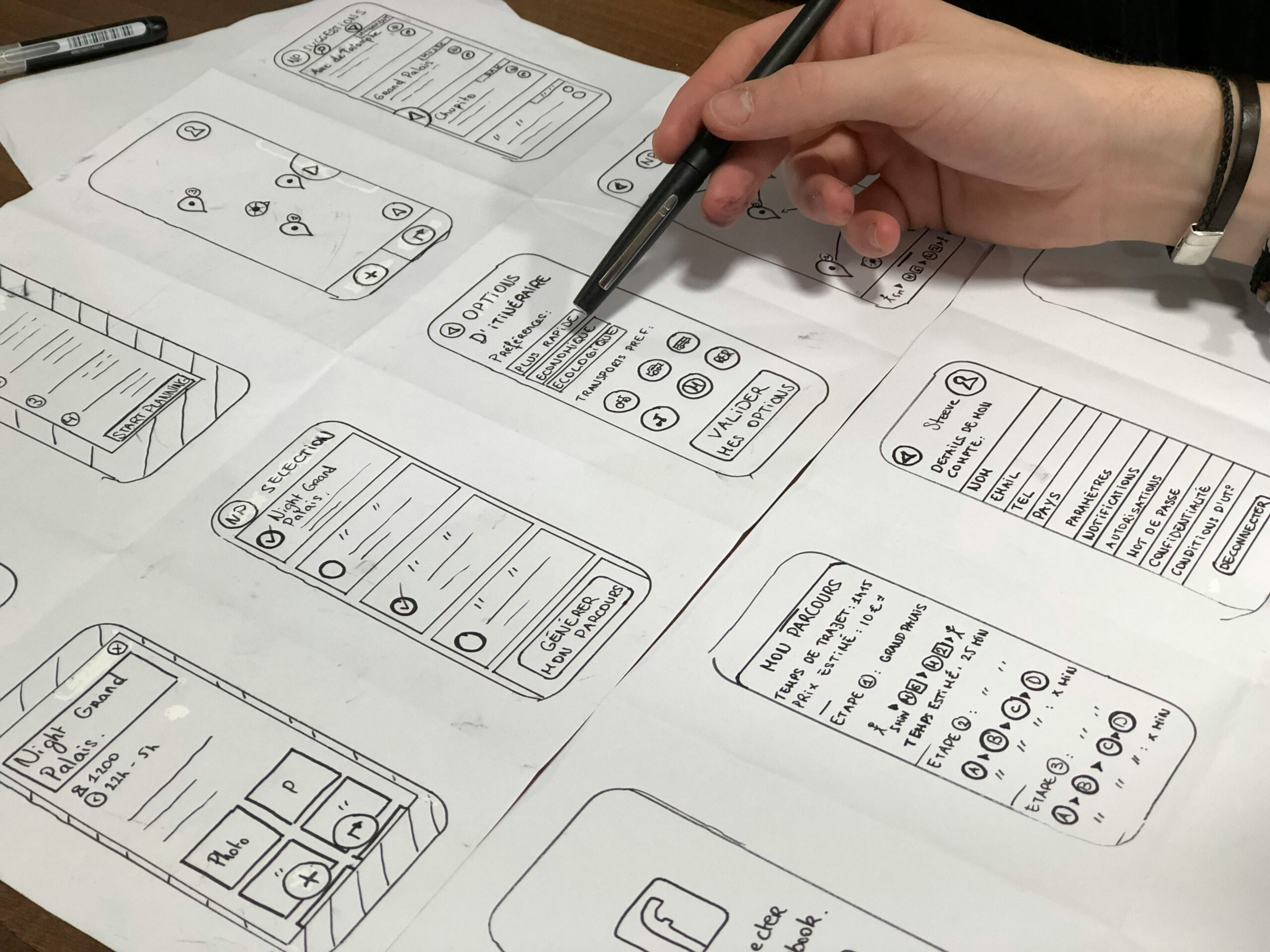User Experience (UX) and User Interface (UI)
In the ever-evolving landscape of digital interaction, User Experience (UX) and User Interface (UI) design have emerged as integral pillars that shape how users perceive and interact with websites, applications, and digital products. This dynamic duo, often referred to as UX/UI design, plays a pivotal role in creating seamless, intuitive, and enjoyable experiences for users. Let’s delve into the symbiotic relationship between UX and UI design, exploring their distinct roles and how they collaborate to craft exceptional digital journeys.
Understanding UX Design: Navigating the User’s Journey
User Experience (UX) design is the art of understanding the user’s needs, motivations, and pain points to create an intuitive and delightful journey throughout their interaction with a product.
1. User Research:
The UX design process kicks off with in-depth user research. Designers aim to comprehend the target audience’s behaviors, preferences, and goals. This may involve surveys, interviews, and usability testing to gather insights that inform the design strategy.
2. Information Architecture:
Once armed with user insights, UX designers focus on creating a logical and intuitive information architecture. This involves structuring content and navigation in a way that makes sense to users, allowing them to effortlessly find what they’re looking for.
3. Wireframing and Prototyping:
Wireframing and prototyping are essential steps in UX design, providing a skeletal structure and interactive representation of the product. These prototypes act as a visual blueprint, allowing designers to test functionality and gather feedback before the full-scale development phase.
4. Usability Testing:
Iterative usability testing is a hallmark of UX design. Designers observe users interacting with prototypes to identify pain points and areas for improvement. This continuous feedback loop ensures that the final product aligns seamlessly with user expectations.
5. Accessibility and Inclusivity:
Ensuring that the product is accessible to users of all abilities is a core aspect of UX design. Designers strive to create experiences that are inclusive, considering factors such as color contrast, readability, and navigational ease for individuals with diverse needs.
Decoding UI Design: Elevating Aesthetics and Interaction
User Interface (UI) design is the artistic component that focuses on the visual elements and interactive features of a product. It’s the bridge between the user and the functionality provided by the UX design.**
1. Visual Design:
UI designers bring life to the UX blueprint through visual design. This involves crafting a visually appealing interface, selecting color schemes, typography, and imagery that resonate with the brand and create a memorable visual identity.
2.Interactive Elements:
UI designers are responsible for the interactive elements that users engage with. Buttons, menus, sliders, and other interface components are meticulously designed to be both aesthetically pleasing and intuitively functional, enhancing the overall user experience.
3. Responsive Design:
With the diversity of devices used to access digital content, UI design embraces responsive design principles. UI designers ensure that the visual elements adapt seamlessly to different screen sizes, providing a consistent and enjoyable experience across devices.
4. Microinteractions:
Microinteractions are subtle animations or feedback loops that add a layer of delight to the user experience. UI designers strategically implement these microinteractions to guide users, provide feedback, and create a sense of responsiveness within the interface.
5. Design Systems:
To maintain consistency and streamline the design process, UI designers often work with design systems. These systems include standardized components, styles, and guidelines that ensure a cohesive visual language across various pages and sections of a product.
The Symbiotic Dance: Where UX and UI Converge
While UX and UI design have distinct focuses, their collaboration is where the magic happens. The seamless integration of both disciplines results in a holistic design approach that prioritizes both functionality and aesthetics.
1. Empathy-Driven Design:
UX design brings empathy to the forefront by understanding user needs and pain points. UI design translates this understanding into visually appealing and emotionally resonant interfaces, fostering a connection between the user and the product.
2. User-Centric Aesthetics:
Aesthetic choices in UI design are not arbitrary; they are guided by the insights gained from UX research. The visual elements are selected to resonate with the target audience, creating a visually pleasing and emotionally resonant experience.
3. Iterative Collaboration:
The UX/UI design process is iterative, with continuous collaboration between UX and UI designers. Feedback loops ensure that the visual and interactive elements align with user expectations, refining the design until it achieves a harmonious balance between form and function.
4. Adaptability and Flexibility:
In a rapidly changing digital landscape, the adaptability of UX/UI design is crucial. The symbiotic relationship allows for flexibility in responding to user feedback, technological advancements, and emerging design trends, ensuring that the product remains relevant and innovative.
The Future of UX/UI Design: Embracing Innovation
As we look ahead, the future of UX/UI design holds exciting possibilities. Emerging technologies such as augmented reality (AR), virtual reality (VR), and voice interfaces are expanding the design landscape, challenging designers to innovate and create experiences that transcend traditional boundaries.
In conclusion, the symbiotic dance of User Experience (UX) and User Interface (UI) design is a testament to the power of collaboration in crafting digital experiences that resonate with users on a profound level. It’s not just about pixels and wireframes; it’s about understanding the user’s journey. As we navigate the ever-evolving world of digital design, embracing the synergy between UX and UI is key to shaping the future of seamless, user-centric experiences
“Creating visually engaging interfaces, and ultimately, delivering a product that leaves a lasting impression.”





What do you think?
I’m extremely impressed with your writing talents and
also with the format to your blog. Is this a paid subject or
did you modify it yourself? Anyway keep up the nice quality
writing, it is rare to see a nice weblog like this one today..